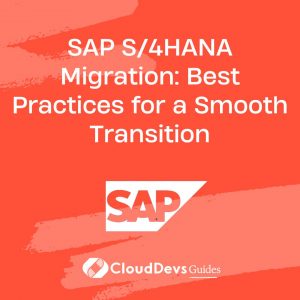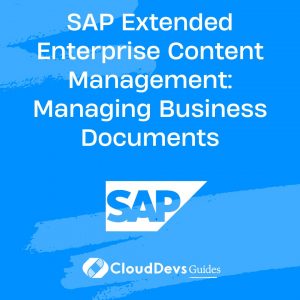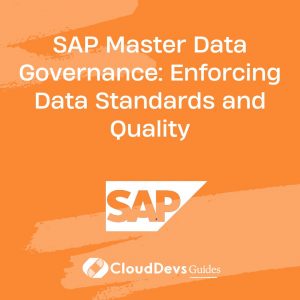SAP S/4HANA Migration: Best Practices for a Smooth Transition
In today’s fast-paced digital landscape, businesses are constantly seeking ways to optimize their operations and stay ahead of the competition. One significant step in this journey is migrating to SAP S/4HANA, SAP’s next-generation ERP suite, which offers enhanced capabilities for real-time analytics, streamlined processes, and improved user experience. However, embarking on an SAP S/4HANA migration journey can be complex and daunting without proper planning and execution. To help guide you through this process, we’ve compiled a comprehensive list of best practices for a smooth transition.
1. Conduct a Comprehensive Assessment
Before diving into the migration process, it’s crucial to conduct a thorough assessment of your current landscape, including systems, data, processes, and infrastructure. This assessment will help identify potential challenges, risks, and opportunities, enabling you to develop a tailored migration strategy.
2. Define Clear Objectives and Goals
Clearly define your objectives and goals for the SAP S/4HANA migration. Whether it’s improving operational efficiency, enabling real-time insights, or enhancing customer experience, having a clear vision will guide your migration strategy and ensure alignment across the organization.
3. Engage Stakeholders Early and Often
Successful SAP S/4HANA migration requires collaboration and buy-in from stakeholders across the organization, including business leaders, IT teams, end-users, and external partners. Engage stakeholders early in the process to gather insights, address concerns, and ensure alignment with business objectives.
4. Develop a Detailed Migration Plan
Develop a detailed migration plan outlining key milestones, timelines, resources, and dependencies. Break down the migration process into manageable phases, such as assessment, preparation, migration, and post-migration activities, to ensure a structured and systematic approach.
5. Invest in Training and Change Management
SAP S/4HANA introduces new functionalities and user interfaces, requiring end-users to adapt to changes in their workflows and processes. Invest in comprehensive training and change management programs to ensure smooth adoption and minimize disruption to business operations.
6. Leverage Tools and Automation
Leverage SAP’s migration tools and automation capabilities to streamline the migration process and minimize manual efforts. Tools such as SAP Advanced Data Migration and SAP Readiness Check can help assess system readiness, analyze data quality, and automate data migration tasks.
7. Ensure Data Quality and Integrity
Data is the lifeblood of any ERP system, and ensuring data quality and integrity is paramount during the migration process. Conduct data cleansing, validation, and reconciliation activities to identify and address inconsistencies, duplicates, and errors before migrating to SAP S/4HANA.
8. Implement Robust Testing Procedures
Thorough testing is essential to validate the functionality, performance, and stability of the SAP S/4HANA environment before going live. Develop comprehensive test cases covering end-to-end business processes, integration points, and customizations to identify and resolve any issues proactively.
9. Establish Post-Migration Support Mechanisms
Transitioning to SAP S/4HANA is just the beginning of the journey. Establish post-migration support mechanisms, including monitoring, troubleshooting, and continuous improvement processes, to ensure ongoing success and optimization of the SAP environment.
10. Monitor Performance and KPIs
Once live on SAP S/4HANA, continuously monitor system performance, user adoption, and key performance indicators (KPIs) to track the impact of the migration and identify areas for optimization and improvement.
Conclusion
Migrating to SAP S/4HANA represents a significant opportunity for businesses to modernize their ERP infrastructure and unlock new levels of agility, innovation, and competitiveness. By following these best practices and leveraging the right tools and resources, you can ensure a smooth and successful transition to SAP S/4HANA, paving the way for future growth and success.
For further reading on SAP S/4HANA migration best practices, check out the following resources:
- SAP S/4HANA Migration Guide – https://www.sap.com/documents/2020/11/99d8d891-007d-0010-87a3-c30de2ffd8ff.html
- SAP S/4HANA Readiness Check – https://support.sap.com/en/alm/sap-capabilities/transition.html
- SAP S/4HANA Adoption Starter Engagement – https://www.sap.com/india/services/s4hana-implementation/adoptions-starter.html
Table of Contents









